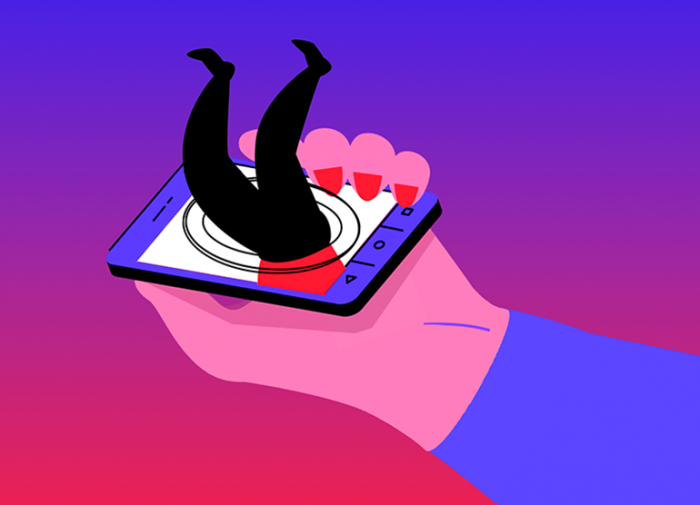Imagine a choose-your-own-adventure-style game, with pathways galore and each choice more enticing than the last. How would you decide where to go? With only a series of images explaining the options that lie ahead, you might mistakenly take a disappointing route.
The layout of a web page or app is slightly more straightforward than that hypothetical game, but it’s true that design can only take you so far. Words make everything clearer, which is where user experience (UX) writers come in.
If you’re a designer wondering what UX writing looks like, you’re not alone. As an officially recognized job title, it’s still relatively new. But it’s fast becoming a dedicated part of more and more creative teams; in the last year alone, the number of people with the title of ‘UX writer’ has increased by roughly 10 percent.
So what is UX writing, why is it growing so quickly, and how does the field at large fit into designers’ day-to-day lives? Let’s take a closer look.
The not-so-basics of UX writing
It might not seem like there’s much of a difference between a good old-fashioned copywriter and a UX writer, but there’s a key, if subtle, distinction. “UX writing is designing with words,” explained Riley Waugh, a UX writer for Dell.
UX writing is, as the name indicates, tied more directly to audience experience. Strong UX writing moves readers through a series of screens to help them accomplish something or arrive somewhere specific. That could be elevating a home page’s buttons, for example, making a call-to-action cut through the noise, or crafting an error message that makes you chuckle (or at least keeps you from slamming your laptop shut in disgust).
To ensure a user’s journey goes smoothly, considerations regarding writing and design aren’t all too different. From accessibility to simplicity and, for some, cultivating a sense of fun, the assessments of good UX return to a single question: is your product easy and enjoyable to use? In the end, excellent UX writing sometimes hides in plain sight—and that’s a conscious decision.
Successful UX fosters seamless, simple experiences, yet the copy that makes up those experiences is the result of a seriously iterative approach. Every word needs to be validated and tested for how it might be misunderstood. There’s a localization aspect too; word-for-word translations won’t cut it for organizations operating in dozens of languages.
For UX writers and designers, it’s all about the team
“Developing a great relationship with designers [among UX writers] means the difference between a good product and a great one,” outlined Rina Abadi-Sova, a senior UX writer at Google and former team lead with web design platform Wix. “Writers and designers may have very different viewpoints about how to execute the tasks at hand, but our users benefit when our partnership is strong.”
Still, for many creative teams, deciding whether copy or design comes first is a classic chicken-or-the-egg question. Should the answer be “neither”?
Workflows within leading product teams don’t necessarily keep these disciplines separate. More often than not, the most effective collaboration strategy features a writer and designer in lockstep all the way from sketching out a concept to its completion.
After receiving a brief for a new website or mobile feature, a designer and writer map out how things should look and feel together, then get started developing a page. Later on, they may incorporate feedback from accessibility experts simultaneously to ensure both copy and design are functional for as many users as possible, including those utilizing screen readers.
This teamwork is also essential to ensure imagery and copy complement one another without falling out of sync. Tone isn’t just communicated through words, and an eye-catching image or animated logo within the user journey could fall flat without a button to nudge you in the right direction.
Airbnb, for one, captures the spirit of a free-flowing vacation and prompts users to explore a wider selection of options with a simple button: “I’m flexible.” Beauty brand Glossier removes the monotony of holiday deal offers by combining lighthearted messaging and a “mystery deal” to intrigue site visitors.
Above all, innovating—and keeping customers happy—in UX is about keeping things fresh. According to research from YouGov, 75 percent of consumers base a company’s credibility on how its website looks, feels, and responds to the user journey. The more testing you can do that combines design and writing, the more likely you are to get that intangible feel just right.
Whether you’re a wordy designer or someone who hears “copy” and runs for the hills, understanding the role of good UX writing is key in today’s design landscape.
Seth King contributed to the reporting of this piece.



